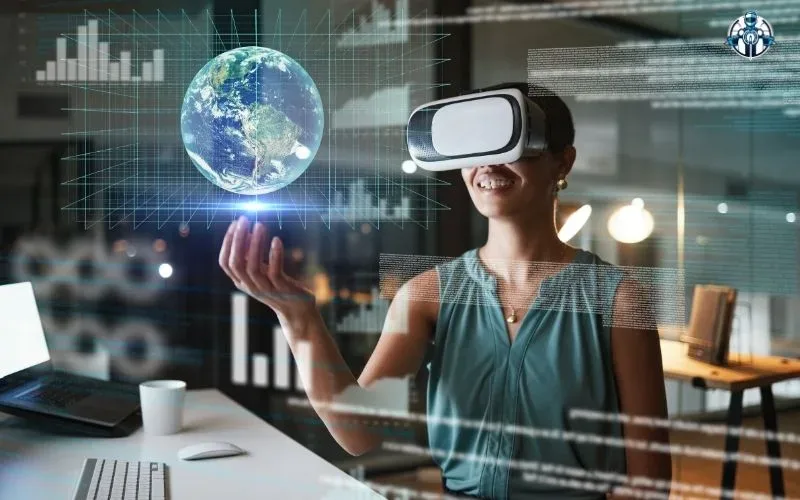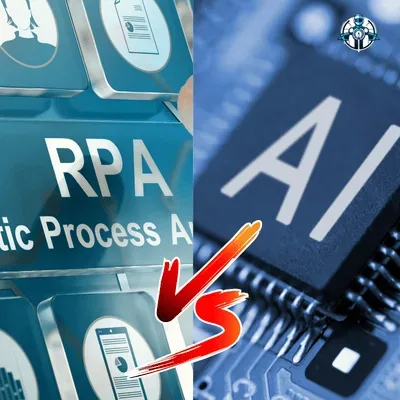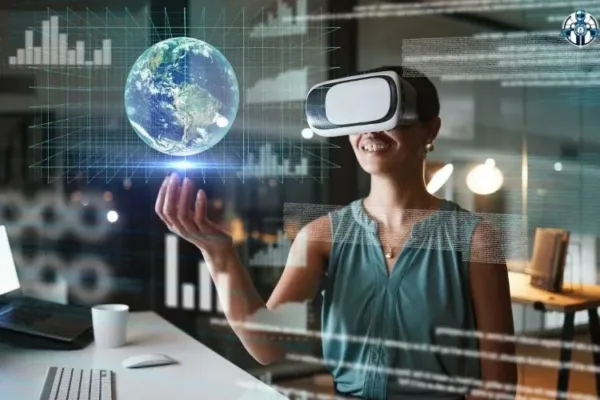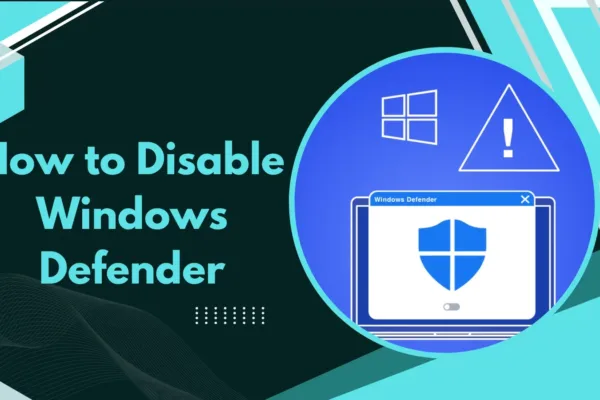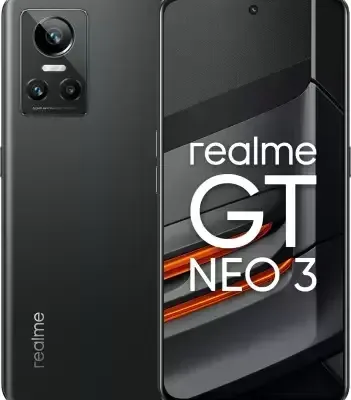Augmented Reality (AR) and Virtual Reality (VR) stand at the forefront of spatial computing, revolutionizing how individuals and organizations interact with digital content in the real world. This guide explores the dynamic role AR and VR play in spatial computing and links their relevance to broader applications like digital twins, geospatial analytics, and future trends.
Listen to our podcast: AR & VR Innovations: Redefining Spatial Computing
The Role of AR & VR in Spatial Computing
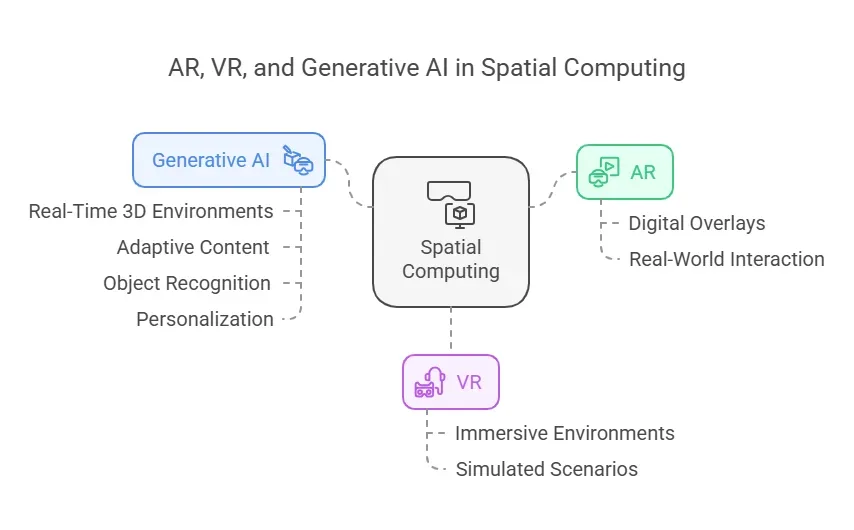
AR and VR are foundational components of spatial computing, enhancing real-world interactions through immersive technologies. By bridging the gap between physical and virtual environments, they unlock unparalleled possibilities for industries ranging from gaming to healthcare.
What Sets AR & VR Apart in Spatial Computing?
- Augmented Reality (AR): Overlays digital elements onto the real world, allowing users to interact with both simultaneously.
- Virtual Reality (VR): Creates fully immersive digital environments that simulate real-world scenarios or entirely fantastical settings.
Generative AI’s Role in AR & VR
Generative AI elevates AR and VR experiences by:
- Crafting real-time 3D environments.
- Dynamically responding to user inputs with adaptive content.
- Enhancing object recognition and personalization through NLP.
For more foundational insights on spatial computing and its broader implications, visit our Spatial Computing Pillar Blog.
Key Applications of AR & VR
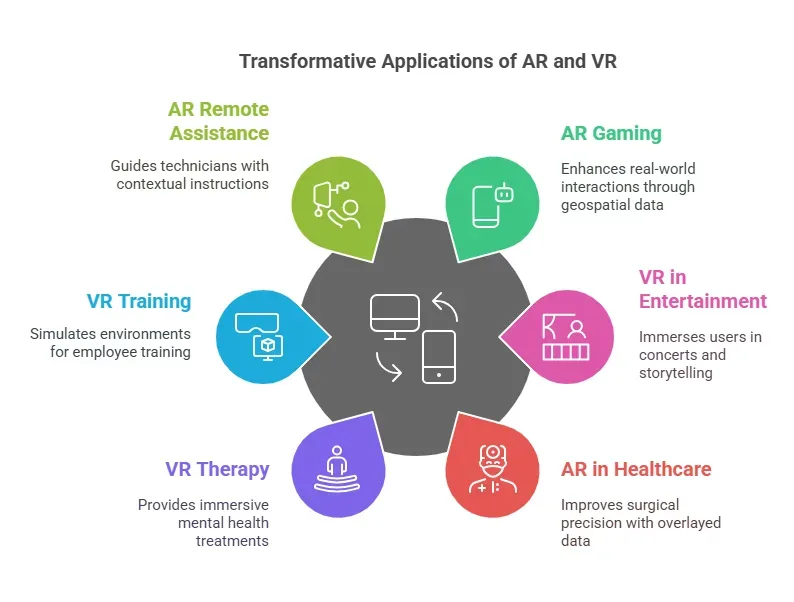
The versatility of AR and VR enables impactful applications across multiple domains. Let’s explore some of the most transformative use cases.
Gaming and Entertainment
- AR Gaming: Titles like Pokémon GO demonstrate the potential of spatial computing by blending geospatial data with real-world interactions. Learn more about how Geospatial Analytics & Location-Based Services empower such experiences.
- VR in Entertainment: From VR concerts to immersive storytelling, virtual reality reshapes how we consume and interact with media.
Healthcare Innovations
- AR for Surgical Assistance: Overlaying patient-specific data during surgeries improves precision.
- VR Therapy: Offers immersive mental health treatments and physical rehabilitation programs.
To understand how these healthcare advancements intersect with predictive modeling, explore our Digital Twins & Real-World Simulations.
Training and Remote Collaboration
- VR Training Modules: Simulate real-world environments for enhanced employee training.
- AR Remote Assistance: Guides on-site technicians with contextual instructions.
By leveraging future trends and emerging tech, such as 5G and edge computing, these applications become even more efficient. Dive deeper into Future Trends & Emerging Tech to learn how these advancements optimize AR and VR solutions.
Technical Framework for AR & VR
AR and VR rely on a robust technical ecosystem to function effectively within spatial computing.
Core Technologies
- Hardware: AR glasses, VR headsets, haptic feedback devices.
- Software: AI-driven spatial mapping platforms and rendering engines.
- Sensors: LiDAR, cameras, and GPS for precise environmental mapping.
Integration with Digital Twins
AR and VR technologies often integrate seamlessly with digital twins, offering real-time visualizations and predictive analytics for industries like construction and manufacturing. Read more in our Digital Twins & Real-World Simulations.
Challenges and Ethical Considerations
While AR and VR technologies offer immense potential, they also raise challenges around data privacy, safety, and accessibility.
Privacy Concerns
- Collection of spatial data requires adherence to strict data protection laws.
- Transparent data usage builds trust and mitigates ethical dilemmas.
Addressing Accessibility
- Affordable AR/VR solutions make these technologies accessible to smaller businesses.
- Inclusive designs ensure usability for individuals with varying physical abilities.
Learn more about ethical deployment strategies in our Security, Privacy, and Ethical Considerations cluster.
Future of AR & VR in Spatial Computing
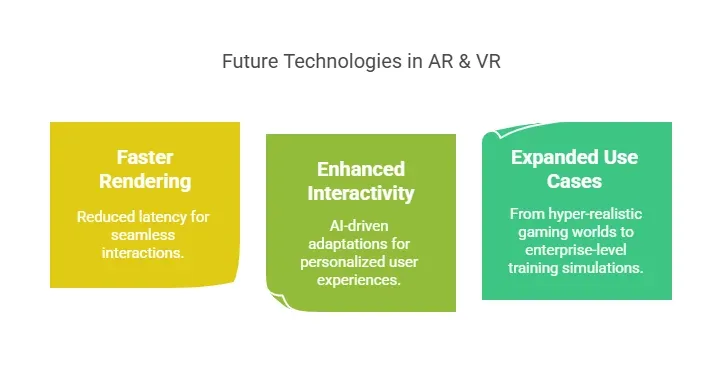
The future of AR and VR is deeply intertwined with advancements in generative AI, 5G, and metaverse ecosystems. These technologies promise:
- Faster Rendering: Reduced latency for seamless interactions.
- Enhanced Interactivity: AI-driven adaptations for personalized user experiences.
- Expanded Use Cases: From hyper-realistic gaming worlds to enterprise-level training simulations.
To explore emerging breakthroughs, check out our Future Trends & Emerging Tech cluster.
FAQ
Q1: How do AR and VR enhance spatial computing?
AR and VR bring interactivity and immersion to spatial computing, enabling users to engage with both physical and digital elements in real-time.
Q2: Can AR & VR be implemented without expensive hardware?
Yes, many AR solutions work on standard smartphones, and affordable VR options like mobile headsets are available for small-scale use cases.
Q3: What role does generative AI play in AR & VR?
Generative AI creates dynamic, real-time 3D elements and adaptive content, enhancing the overall user experience.
Q4: Which industries benefit the most from AR & VR?
Industries like gaming, healthcare, retail, education, and manufacturing leverage AR & VR for improved engagement, efficiency, and training.
Q5: Are there privacy risks in AR & VR environments?
Yes, data collection in AR/VR applications must comply with privacy regulations, ensuring transparency and user consent. Visit our Security, Privacy, and Ethical Considerations cluster for more insights.

